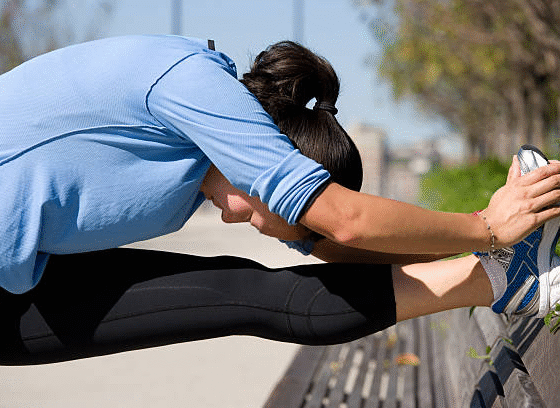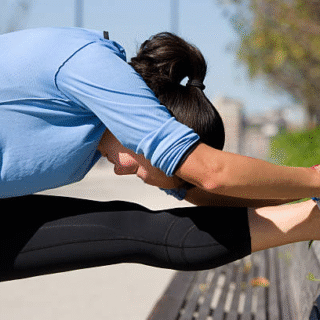How to Start Exercising at Home: A Simple Guide for Beginners

If you’ve been thinking about getting fitter but the idea of joining a gym feels overwhelming or expensive, working out at home can be the perfect solution. The best part? You don’t need fancy machines, expensive gear, or a huge space to get started. You just need a plan, a little motivation, and the willingness to take that first step.
This guide will walk you through exactly how to start exercising at home, even if you’ve never had a workout routine before. We’ll cover choosing your goals, creating a simple plan, finding the right exercises, and staying consistent.
1. Understand Your “Why”
Before you pick up a dumbbell or start doing push-ups, it’s important to know why you want to start exercising at home. Your reason will help you stay motivated on days when you don’t feel like working out.
Some common reasons include:
- Improving overall health
- Losing weight or toning up
- Boosting energy and mood
- Reducing stress
- Building strength and flexibility
When your “why” is clear, you’ll find it easier to stick to your routine because it’s more than just a task — it’s part of your bigger life goals.
2. Start Small and Build Gradually
A big mistake beginners make is starting too fast, which often leads to burnout or injury. Instead of trying to do an intense one-hour workout on day one, begin with something manageable.
Here’s a simple approach:
- Week 1–2: 10–15 minutes of light exercise 3–4 times per week
- Week 3–4: Increase to 20–25 minutes, 4–5 times per week
- After 1 month: Add more intensity or duration as your body adapts
By starting small, you allow your body to adjust, and you’ll be more likely to stay consistent.
3. Create a Comfortable Workout Space
You don’t need a home gym to start exercising. Just find a space where you can move comfortably. It could be your living room, bedroom, or even a corner of your home.
Tips for setting up your workout area:
- Clear enough space for basic movements like lunges, jumping jacks, and stretches
- Keep a yoga mat for comfort during floor exercises
- Store small equipment like resistance bands or dumbbells in a basket for easy access
- Make sure the area is well-lit and has good airflow
Having a dedicated space signals to your brain that it’s “workout time,” which can help you get in the right mindset.
4. Choose the Right Exercises
When exercising at home, you can mix and match workouts based on your goals and preferences.
Beginner-Friendly Exercise Categories:
a. Bodyweight Strength Training
These exercises use your own body weight as resistance:
- Push-ups (or knee push-ups for beginners)
- Squats
- Lunges
- Planks
b. Cardio Workouts
Great for improving heart health and burning calories:
- Jumping jacks
- High knees
- Marching in place
- Step-ups (using a sturdy chair or step)
c. Flexibility and Mobility
Helpful for preventing injury and improving posture:
- Yoga stretches
- Shoulder rolls
- Hamstring stretches
- Cat-cow stretch
You can combine these into a short circuit workout — for example:
| Exercise | Time/Reps | Rest |
| Squats | 12 reps | 20 sec |
| Push-ups | 8–10 reps | 20 sec |
| Jumping jacks | 30 sec | 20 sec |
| Plank | 20–30 sec | 20 sec |
Repeat this circuit 2–3 times depending on your fitness level.
5. Use Minimal Equipment (Optional)
While you can start without any equipment, adding small, inexpensive tools can make your workouts more fun and effective:
- Resistance bands – Great for strength training and take up almost no space
- Dumbbells – Perfect for toning arms and adding resistance
- Skipping rope – Fantastic for quick cardio
- Yoga mat – For comfort during stretching and floor exercises
You can even get creative with household items like water bottles as weights or a sturdy chair for step-ups.
6. Make a Weekly Workout Plan
A structured plan will keep you on track and ensure you work all parts of your body.
Example Beginner Home Workout Plan:
| Day | Focus | Example Workout |
| Monday | Strength | Squats, push-ups, planks |
| Tuesday | Cardio | Jump rope, high knees, step-ups |
| Wednesday | Rest or light yoga | Gentle stretching |
| Thursday | Strength | Lunges, resistance band rows, side planks |
| Friday | Cardio | Jumping jacks, jogging in place, burpees (optional) |
| Saturday | Flexibility | Full-body stretch or yoga |
| Sunday | Rest | Relax & recover |
7. Stay Consistent and Motivated
The hardest part isn’t starting — it’s sticking with it. To stay motivated:
- Track your workouts in a notebook or app
- Celebrate small wins like doing an extra push-up or holding a plank longer
- Try workout videos on YouTube for variety
- Exercise with a friend online or in person for accountability
- Play your favorite upbeat music while working out
8. Listen to Your Body
It’s normal to feel a little sore after starting a new workout routine, but sharp pain is a warning sign to stop and rest. Always warm up before exercising and cool down afterward to prevent injury.
A good warm-up could be 3–5 minutes of light cardio (marching in place, arm circles, gentle jogging), and a cool-down could include stretching your major muscle groups.
9. Adjust as You Improve
Once your workouts start feeling too easy, it’s time to challenge yourself. You can do this by:
- Increasing repetitions or workout time
- Reducing rest periods between exercises
- Adding more challenging moves (like going from knee push-ups to full push-ups)
- Using heavier resistance or weights
The goal is gradual progress — pushing your limits without overdoing it.
10. The Benefits You’ll Notice Over Time
With consistency, you’ll begin to see and feel changes:
- Improved strength and stamina
- Better mood and reduced stress
- Increased energy throughout the day
- More flexibility and less stiffness
- Boosted confidence
These results often start to appear within a few weeks, but the real reward is building a healthy lifestyle you can maintain for years.
Final Thoughts
Starting to exercise at home is simpler than most people think. You don’t need a big budget, a lot of space, or even much experience — just a commitment to take small, consistent steps toward your goals.
By knowing your “why,” starting slow, setting up a comfortable space, choosing beginner-friendly exercises, and staying consistent, you can build a fitness habit that fits perfectly into your life.
FAQs About Starting to Exercise at Home
1. How many days a week should I exercise as a beginner?
For beginners, 3–4 days per week is enough to start building fitness while allowing your body time to recover.
2. Do I need to warm up before every home workout?
Yes. Warming up increases blood flow to your muscles, reduces the risk of injury, and helps you perform better.
3. Can I lose weight just by exercising at home?
Yes, but combining regular workouts with a balanced, healthy diet will give you the best results for weight loss.
4. What if I don’t have any equipment?
You can do many effective exercises using just your body weight, such as squats, push-ups, planks, and jumping jacks.
5. How long will it take to see results?
Some people start feeling more energetic and stronger within 2–4 weeks, but visible changes usually appear after 6–8 weeks of consistent training.



